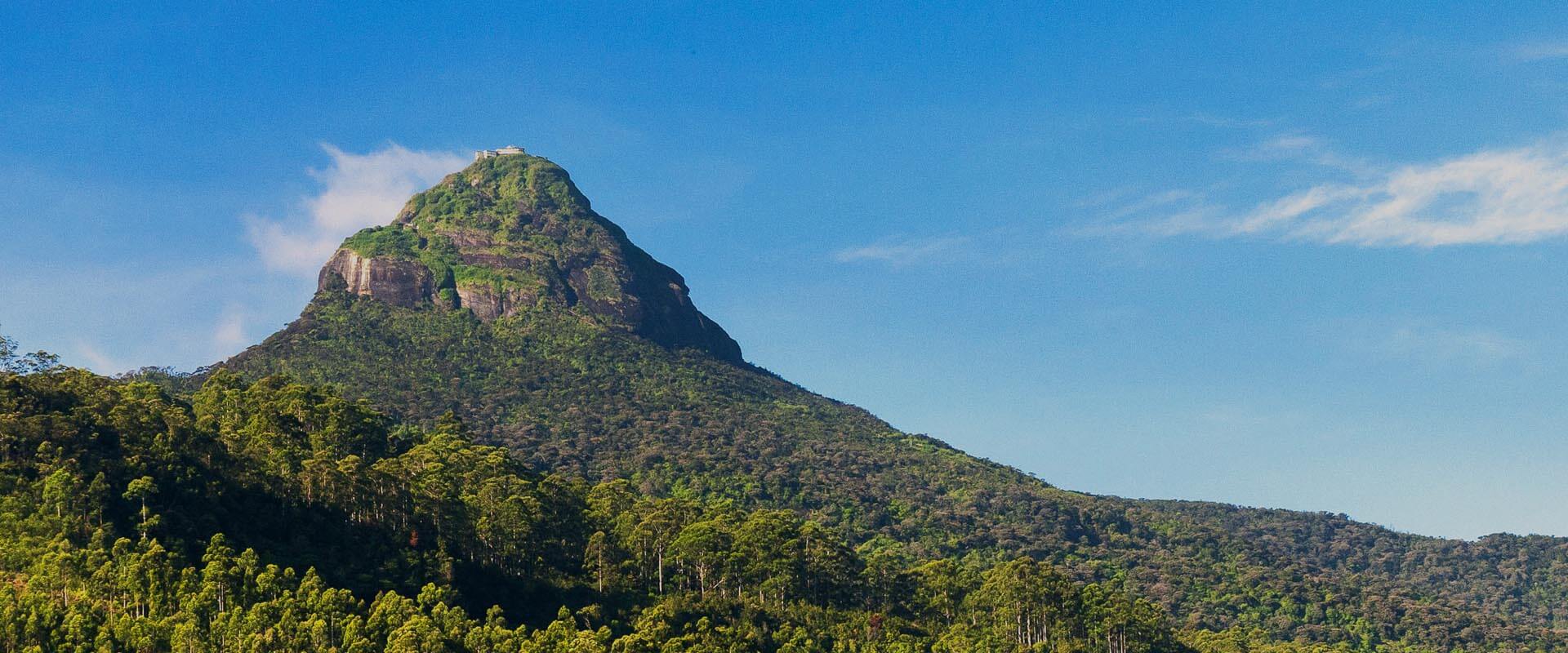Adam's Peak
The most famous physical feature of Ceylon is Adam’s Peak, which is situated in Rathnapura district. It is on the edge of The central massif but its surrounding group of mountains called the Wilderness of the Peak, is so extensive in comparison to the bulk of the other mountain groups that it appears to form a nucleus of its own, separate from the others. It is about 7500 ft high and, though it is the second highest peak in the land, its position in relation to the topography is so dominant that it stands out above all others.
From December to April, pilgrims converge to climb the 2,224m (7295 ft) Adam’s Peak. At the top is a huge ‘footprint’, clamied by Muslims to belong to Adam, who stood there in expiation of his sin in the Garden of Eden. Never mind that Buddhists believe it to be the mark of Buddha or that Hindus hold the print to have been made by Lord Shiva (or that Christians Claim it is the footprint of St.Thomas) the fact remains that it is has been a place of pilgrimage for over one thousand years.
The view from the peak at the dawn is enough to shock the most cynical agnostic into a state of reverie. It takes about four hours to climb to the top from the town of Dalhousie. Reaching the base of Adam’s Peak is simple and if you’re making a night ascent, you’ve got all day to arrive. Buses run to Dalhousie from Kandy, Nuwara Eliya, and Colombo in the pilgrimage season. Otherwise you need to get first to Hatton of Maskeliya. If you’re really running late, taxis will take to Hatton or Dalhousie. You’ll need to cover 220 km (136m) to get there from Colombo.
Plan you trip to Adam’s Peak around the monsoon season. While Colombo and surroundings are comfortable year round, heavy rains can be expected from May to August and October to January. This is why there is a ‘season’ for the Adam’s Peak pilgrimage, i.e. from full moon of December until Full moon of May. If you try to climb in July- August, you are likely to get soaking wet before reaching the top, where it is cold day and night. Once you get wet, it will be a long night waiting for the sun to come up.
Sure, there are pilgrims who climb year round, and you might even be lucky enough to climb and stay dry and warm. But the chances of that are rather slim in July. Yes, the climb is well lit year round, so it is safe also. Accommodations are found at the base of the peak but not upon the peak of course, which is cramped especially when there are many pilgrims.


